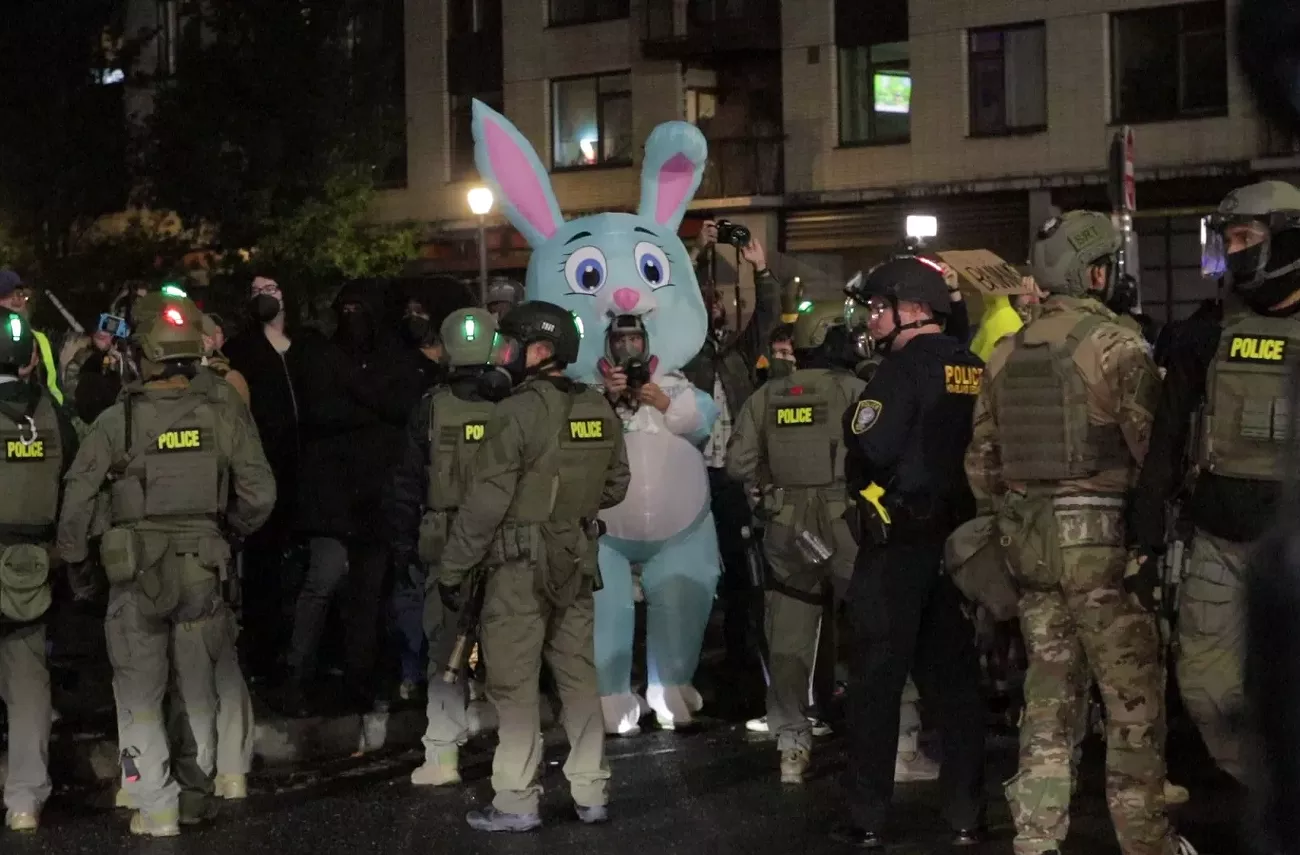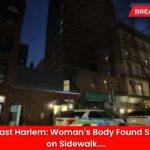The city of Portland once again found itself in the national spotlight as a night of creative civil disobedience quickly spiraled into chaos outside the local Immigration and Customs Enforcement (ICE) facility. What began as a colorful, even humorous protest filled with inflatable costumes ended with federal agents unleashing an alarming level of force against demonstrators and journalists.
From Satire to Suppression
On the evening of Saturday, October 11, hundreds of anti-ICE protesters gathered near Portland’s immigration processing center. Many arrived dressed in inflatable costumes — a now-famous protest tactic in the city. Among the crowd were characters like Pikachu, SpongeBob, and the self-declared “Portland frog brigade.” The playful imagery served as a light-hearted rebuke of President Donald Trump’s portrayal of the city as “war-ravaged” and “controlled by Antifa terrorists.”
The mood shifted dramatically at 7:30 p.m., when five federal agents carried a protester into the ICE building by their limbs, while another officer filmed the arrest. Despite the tension, the crowd resumed dancing moments later — but the calm was short-lived.
Also Read
Federal Escalation Begins
By 9 p.m., officers with the Department of Homeland Security (DHS) began aggressively clearing driveways to allow government vehicles to exit. Witnesses reported seeing protesters shoved to the ground and hit with pepper balls, while others were forcibly removed for standing near property lines marked with blue paint.
Adding to the volatility, right-wing counter-demonstrators appeared at the scene. One man was arrested by Portland police after allegedly punching a protester in the head, deepening tensions between the groups.
Meanwhile, Oregon remains embroiled in a legal battle over Trump’s attempt to deploy National Guard troops to the state. Though troops from California were sent earlier this month, a temporary restraining order currently prevents their formal deployment. The case now sits before an appeals court, which will determine whether the president has the constitutional authority to use military force against domestic dissent.
Tear Gas and Violent Arrests
Just before 10 p.m., the situation escalated dramatically. Protesters sitting peacefully on a retaining wall in front of the ICE facility were met with tear gas canisters fired from the rooftop. Federal officers then threw additional munitions into the crowd.
A volunteer medic attempting to cool a spent gas canister was struck with a pepper ball, sparking outrage. “You wanna start a fire?” the medic shouted toward the officers.
Over the next hour, arrests were made seemingly without clear provocation. Protesters were slammed into concrete walls, dragged by their limbs, and detained behind federal gates. Journalists were not spared — one photojournalist was shot in the arm with a pepper ball, while another had his phone destroyed by a direct hit.
Witnesses described the air along Bancroft Street as thick with gas as protesters attempted to retreat. One demonstrator holding a wooden cross was shot in the head with a pepper ball and then dragged inside after stepping over the property line.
City Officials Condemn Federal Tactics
Reports of excessive force prompted widespread condemnation. Portland’s City Attorney filed a memo to the U.S. Department of Justice’s Civil Rights Division, documenting multiple instances of unnecessary aggression by DHS officers.
In response to growing concern, Mayor Keith Wilson sent a letter to DHS officials after a visit from Secretary Kristi Noem, reaffirming Portland’s sanctuary city status and urging federal restraint.
“We continue to ask that your federal law enforcement officers raise their operational and legal standards in terms of use of force, identification, and body-worn cameras,” Wilson wrote. “The lack of accountability for unconstitutional behavior only serves to deepen the divide between this facility and our community.”
Federal officials, according to the mayor, requested tighter restrictions on public access and the establishment of designated “free speech zones.” Wilson declined, stating that the city “commits to peacefully facilitating free speech throughout Portland,” though local police would prioritize “life-safety emergencies.”
Feds Lose Control
By 11:13 p.m., the situation had reached a breaking point. Federal agents began a final clearing operation, firing additional rounds of tear gas and non-lethal ammunition. One protester was pinned to the ground and screamed that they couldn’t breathe as several agents piled on top of them.
Others described the chaotic scene as “a war zone.” Journalists wearing PRESS vests were shoved to the ground despite clearly identifying themselves. Bystanders said agents used 40mm rubber rounds and flashbangs to disperse anyone remaining near the facility entrance.
A Broader Pattern of Crackdowns
Portland’s experience mirrors a troubling national trend. Across the United States, federal police have been recorded using violent crowd control tactics at immigration and protest sites. President Trump and Defense Secretary Pete Hegseth have repeatedly encouraged officers to use “full force” on demonstrators, sparking multiple lawsuits alleging violations of constitutional rights.
Civil rights advocates argue the events at the Portland ICE facility demonstrate a dangerous precedent: federal law enforcement acting with minimal oversight and maximum aggression against largely peaceful protesters.
The Aftermath
By midnight, Bancroft Street was littered with gas canisters, rubber rounds, and discarded protest signs. Protesters dispersed, coughing and dazed, while medics tended to the injured.
Despite the chaos, demonstrators vowed to return. “We came out here to dance, to laugh, to show we’re not afraid,” one protester said while wiping tear gas residue from her face. “They can gas us, but they can’t silence us.”
As investigations into federal conduct continue, Portland once again stands at the heart of America’s debate over civil liberties, federal power, and the right to dissent — a city determined to keep its streets a stage for resistance, no matter how heavy the hand that tries to suppress it.












